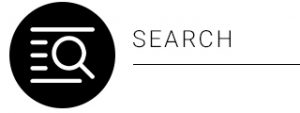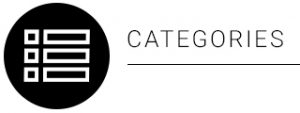REPRESENT ANALYSE AND CALCULATE SHAPE AND MOTION IN 2 AND 3 DIMENSIONAL SPACE IN DIFFERENT CONTEXTS
US 9013
NQF LEVEL: 3
CREDITS: 4
NOTIONAL HOURS: 40
SAQA UNIT STANDARD ALIGNMENT
SPECIFIC OUTCOMES (SO)
Level 3 | Credit 4
UNIT STANDARD 9013 :
Represent analyse and calculate shape and motion in 2 and 3 dimensional space in different contexts.
SPECIFIC OUTCOME 1
On completion of this section you will be able to Measure, estimate, and calculate physical quantities in practical situations relevant to the adult in life or the workplace.
ASSESSMENT CRITERIA
- Scales on the measuring instruments are read correctly. (SO1, AC1)
- Quantities are estimated to a tolerance justified in the context of the need. (SO1, AC2)
- The appropriate instrument is chosen to measure a particular quantity. (SO1, AC3)
- Quantities are measured correctly to within the least step of the instrument (SO1, AC4)
- Calculations are carried out correctly.(SO1, AC5)
- Symbols and units are used in accordance with SI conventions and as appropriate to the situation.(SO 1, AC6)
SPECIFIC OUTCOME 2
Explore, analyse and critique, describe and represent, interpret and justify geometrical relationships and conjectures.
ASSESSMENT CRITERIA
- Descriptions are based on a systematic analysis of the shapes and reflect the properties of the shapes accurately, clearly and completely. (SO 2, AC1)
- Descriptions include quantitative information appropriate to the situation and need. (SO 2, AC2)
- Conjectures as appropriate to the situation, are based on well-planned investigations of geometrical properties(SO 2, AC3)
- Representations of the problems are consistent with and appropriate to the problem context. The problems are represented comprehensively and in mathematical terms (SO 2, AC4).
- Results are achieved through efficient and correct analysis and manipulation of representations. (SO2, AC5)
- Problem-solving methods are presented clearly, logically and in mathematical terms. (SO 2, AC6)
- Solutions are correct and are interpreted and valid in terms of the context of the problem.(SO 2, AC7)
HOW TO USE THIS GUIDE
ICONS
TAKE NOTE
PROGRAMME OVERVIEW
LEARNING ASSUMPTIONS
HOW YOU WILL LEARN
HOW YOU WILL BE ASSESSED
SECTION 1: MEASURE, ESTIMATE, AND CALCULATE PHYSICAL QUANTITIES
MEASURING INSTRUMENTS
SI AND IMPERIAL MEASUREMENTS
SECTION 2: GEOMETRICAL RELATIONSHIPS
PROPERTIES OF GEOMETRIC SHAPES
ESTIMATING, MEASURING AND CALCULATING
DRAWING SCALES
TRANSFORMATIONS OF 2D GEOMETRIC FIGURES
PROBLEM SOLVING
HOW TO USE THIS GUIDE
This workbook belongs to you. It is designed to serve as a guide for the duration of your training programme and as a resource for after the time. It contains readings, activities, and application aids that will assist you in developing the knowledge and skills stipulated in the specific outcomes and assessment criteria. Follow along in the guide as the facilitator takes you through the material, and feel free to make notes and diagrams that will help you to clarify or retain information. Jot down things that work well or ideas that come from the group. Also, note any points you would like to explore further. Participate actively in the skill practice activities, as they will give you an opportunity to gain insights from other people’s experiences and to practice the skills. Do not forget to share your own experiences so that others can learn from you too.
ICONS
For ease of reference, an icon will indicate different activities. The following icons indicate different activities in the manual.
PROGRAMME OVERVIEW
PURPOSE
The essential purposes of the mathematical literacy requirements are that, as the learner progresses with confidence through the levels, the learner will grow in:
- An insightful use of mathematics in the management of the needs of everyday living to become a self-managing person.
- An understanding of mathematical applications that provides insight into the learner`s present and future occupational experiences and so develop into a contributing worker.
- The ability to voice a critical sensitivity to the role of mathematics in a democratic society and so become a participating citizen.
People credited with this unit standard are able to:
- Measure, estimate, and calculate physical quantities in practical situations relevant to the adult with increasing responsibilities in life or the workplace
- Explore analyse and critique, describe and represent, interpret and justify geometrical relationships and conjectures to solve problems in two and three dimensional geometrical situations
LEARNING ASSUMPTIONS
The credit value is based on the assumption that people starting to learn towards this unit standard are competent in Mathematical Literacy and Communications at NQF level 2
HOW YOU WILL LEARN
The programme methodology includes facilitator presentations, readings, individual activities, group discussions, and skill application exercises.
HOW YOU WILL BE ASSESSED
This programme has been aligned to registered unit standards. You will be assessed against the outcomes of the unit standards by completing a knowledge assignment that covers the essential embedded knowledge stipulated in the unit standards. When you are assessed as competent against the unit standards, you will receive a certificate of competence and be awarded 9 credits towards a National Qualification.






